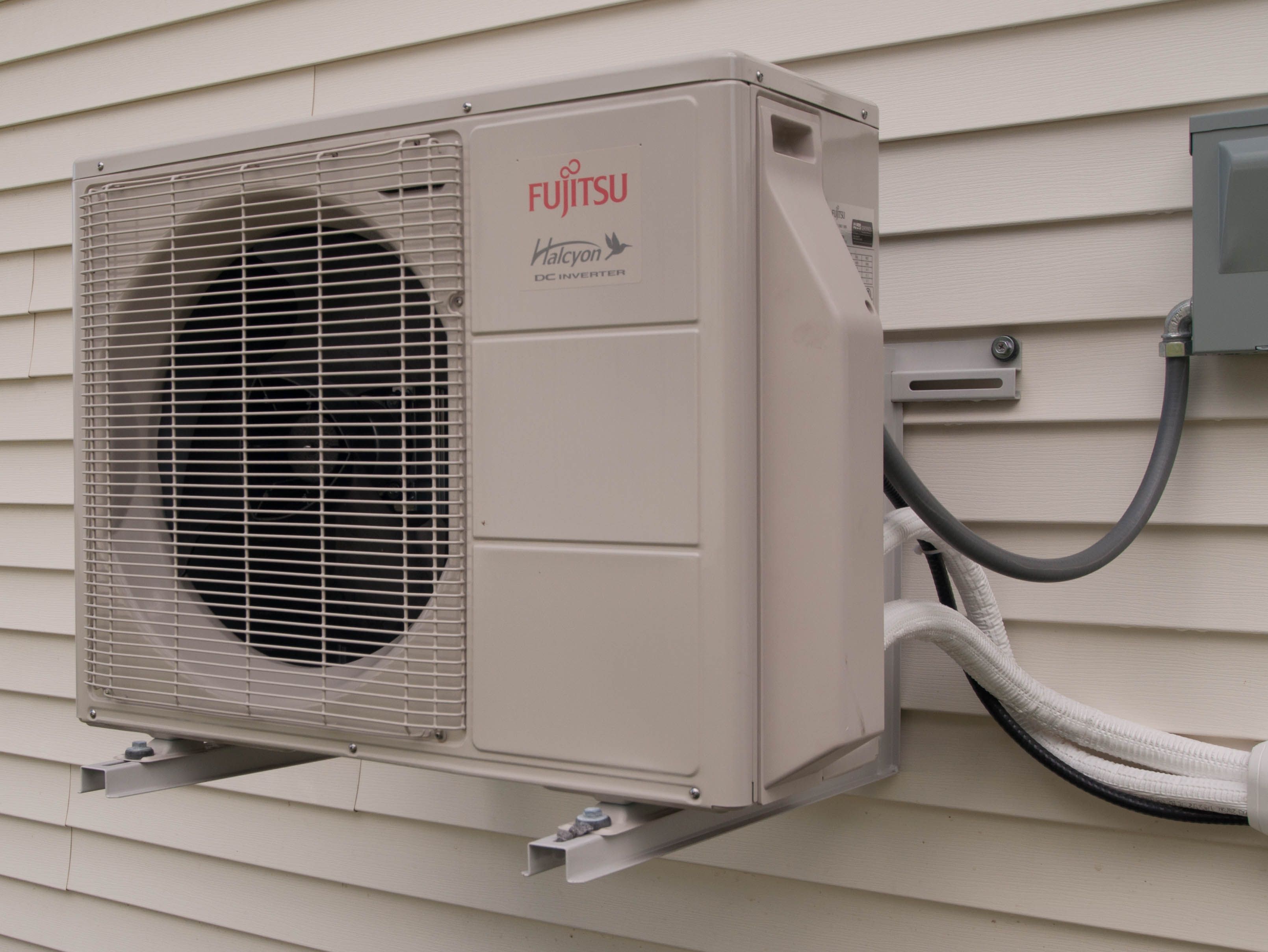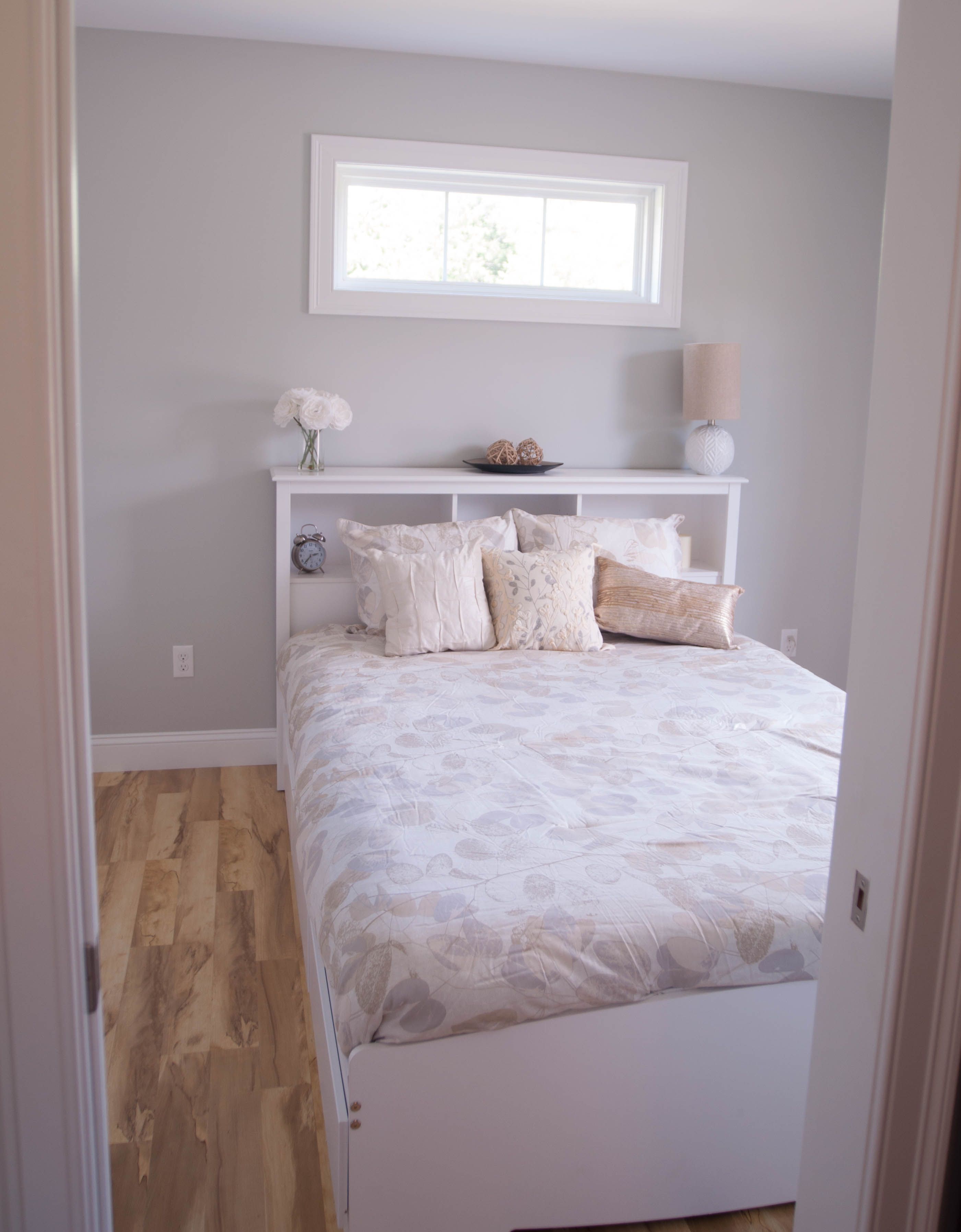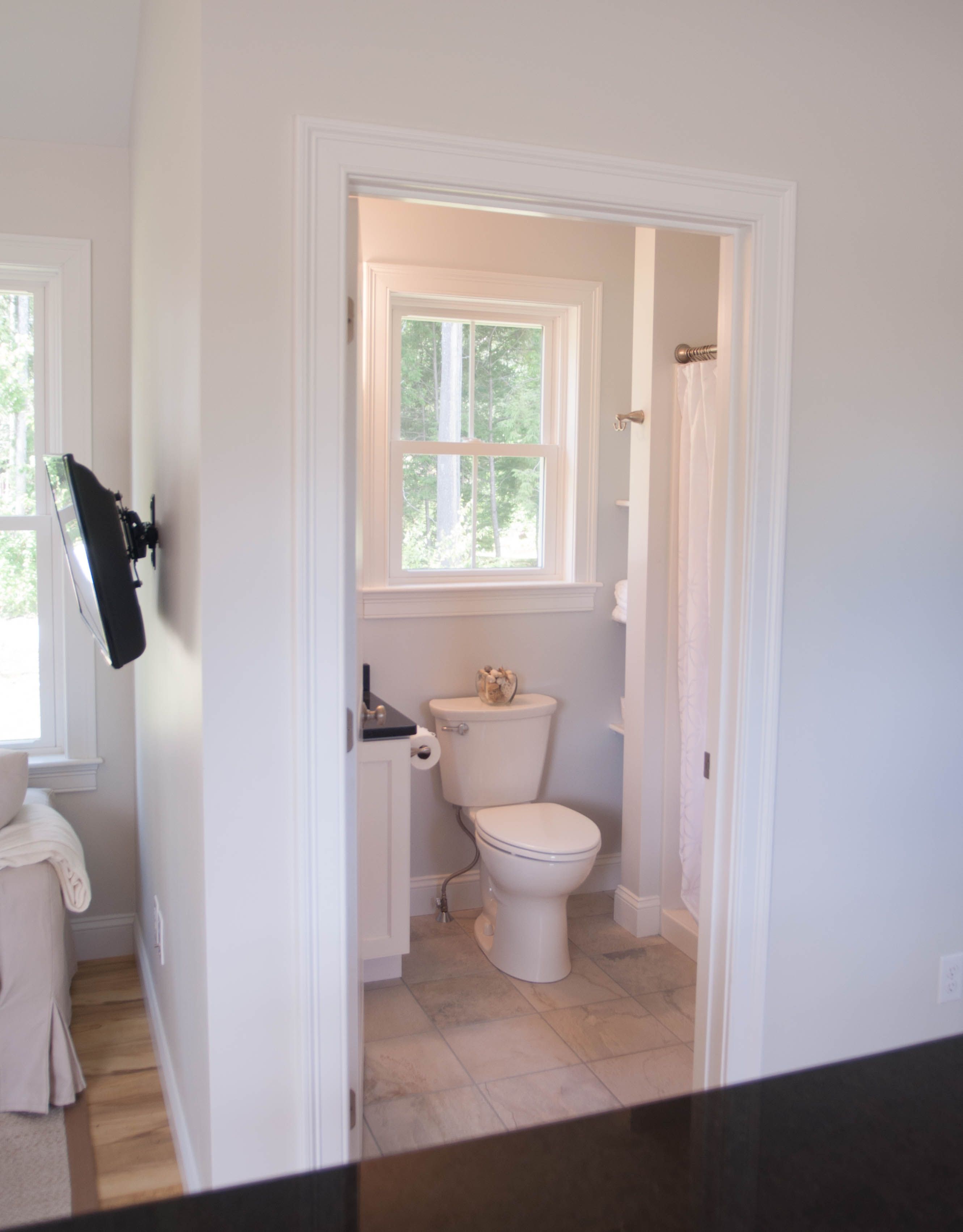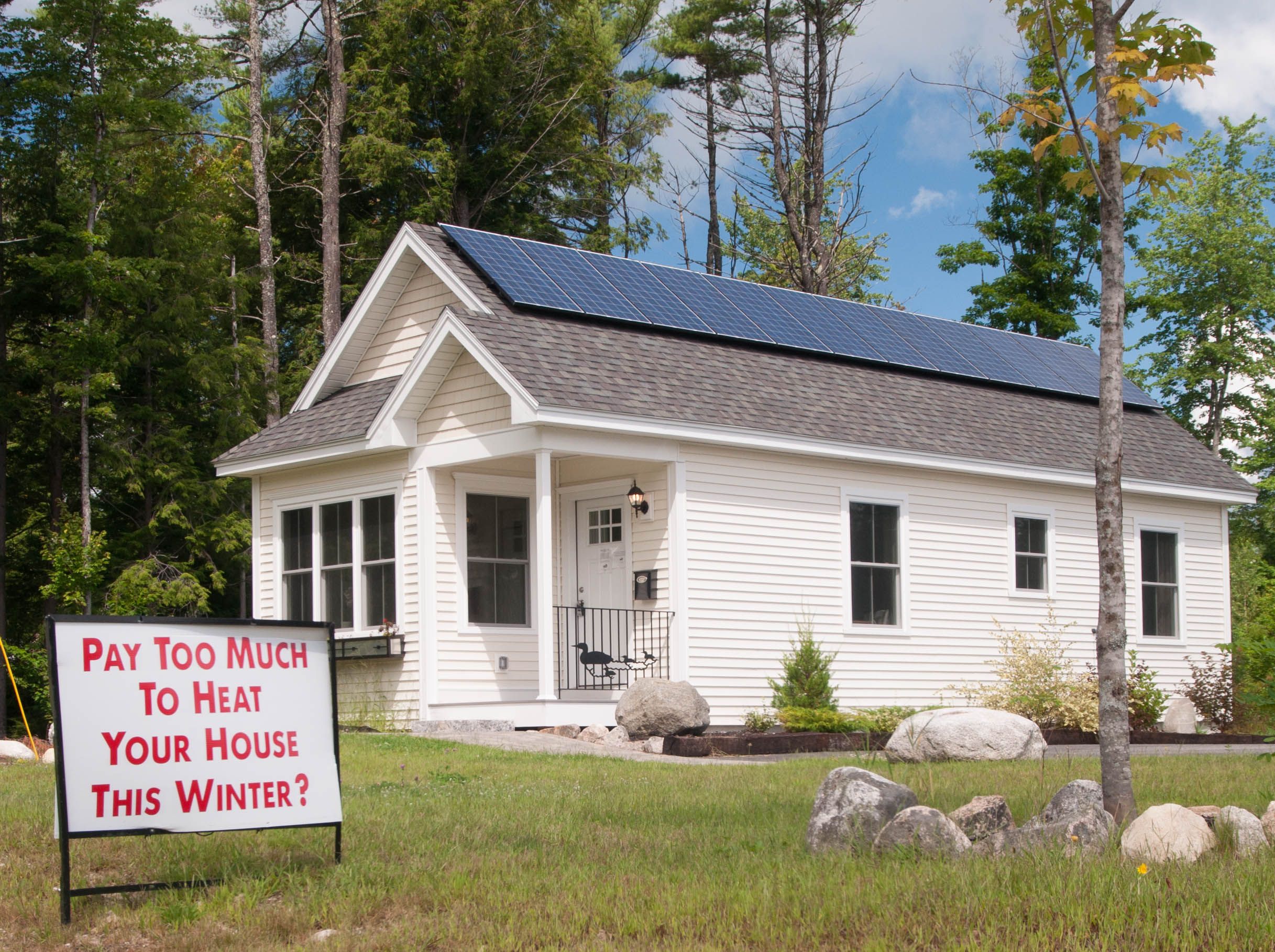
Judging by the constant stream of visitors to their fledgling housing development in Bridgton, Maine, developers Justin McIver and Mark Lopez think they’ve found just the right mix of energy efficiency, price, and amenities for older buyers.
Yet the first thing prospective buyers are likely to notice about these houses is their size. Unless buyers are just moving out of a New York City studio, these places will probably have a lot less square footage than what they’re used to. Houses in the first “pod” of 10 units come in two sizes, 610 sq. ft. and 640 sq. ft.
Even so, Lopez would rather you didn’t confuse them with the tiny house movement. They’re not tiny houses, Lopez says, “they’re tiny mansions.” Especially in light of the fact that the tiny-house movement sees 250 sq. ft. as the maximum size of a tiny house.
When fully built out, The Cottages at Willett Brook will consist of 60 units in six pods. Construction on the first group of houses, plus garage/storage units and a central clubhouse, started in April. Work is just starting on a second pod that will include homes of 900 sq. ft. The development is close to both a hospital and a supermarket and it’s in a popular lakes region recreational area about an hour northwest of Portland. It’s prime retirement country.
McIver’s company, Maine Eco Homes, was already building high-end, energy-efficient, designs. With this project, he’s also offering buyers fewer maintenance headaches, predictable costs and the chance to unload possessions they no longer want or need–all part and parcel of living in a really small house.
“It came from a combination of things,” the 31-year-old McIver says of the idea behind the development, “people looking to downsize, people tired of heating their homes, maintaining their big homes, their inefficient homes. People came to us and said, ‘We’re spending $700 or $800 a month on heating fuel and we’re still cold.’ Putting together what people want and what they don’t want, we came up with this concept that less is more.”
Energy costs modeled at $1.25 a day
Bridgton, in Climate Zone 6, can see the number of heating degree days top 8000 a year. And in a state where fuel oil heats 70% or more of all homes, and a lot of the housing stock is old, heating costs can weigh heavily on homeowners with fixed or limited incomes.
That helps explain a marketing plan that emphasizes low energy costs–essentially free heat and air conditioning when buyers spend an extra $9000 for a 3kw solar array, the developers said. Even prospective homeowners who don’t know a lot about renewables catch on quickly.
“It’s our job to educate them, and the education is as simple as the economics,” says Lopez, a 51-year-old commercial real estate developer who also has a background in residential construction. “When you tell someone that if they opt to put the solar panels on that they’re looking at a calculated energy cost of $1.25 a day–$35 a month–that’s pretty compelling for them to make that investment. It gives them a hedge against increased rates in the future, and the rates aren’t going anywhere but up.
“It’s an easy education,” he continues. “When you tell them it’s the same price as a medium ice coffee at McDonald’s every day for their heating costs, it’s pretty compelling.”
McIver says the grid-tied solar systems are designed to handle heating and cooling, but not lights and other plug loads, and are probably not robust enough for net-zero energy operation for year-rounders. If the house were used as a vacation or seasonal residence, the array might be big enough to take care of all energy bills.
Lot sizes in the age-restricted community range from 3000 to 7000 sq. ft. Homeowners will pay $115 a month in association fees that will cover snow removal, yard maintenance, and irrigation. Taxes are estimated at $150 a month.
No aspirations for Passivhaus performance
Lopez and McIver have chosen construction details carefully. They’re looking for reasonable performance without spending so much on insulation, air-sealing and other details that buyers can’t afford to buy a house.
The slab-on-grade houses are framed with 2x4s (24 in. on center) with raised-heel truss roofs and insulated with a combination of rigid and spray foam and cellulose. Exterior walls are sheathed with Huber’s Zip System R-Sheathing, a panel combining polyiso rigid insulation with a structural layer (total R-value 6.6, according to Huber) plus 2-1/2 in. of closed-cell polyurethane foam for an R-value of about 23 at the center of a stud cavity.
The roof is insulated with 15-1/2 in. of blown-in cellulose, R-53 according to the developers. The foundation is insulated with 2 in. of rigid foam board.
Other details:
- Domestic hot water: Electric tank-style heater.
- Whole house ventilation: Panasonic WhisperGreen fan for continuous ventilation.
- Windows: Double-glazed PVC units manufactured by Paradigm.
- Roofing: Architectural composition.
- Siding: Vinyl.
McIver said his background in high-performance building includes one of the first net-zero-energy houses in Maine, but it sometimes makes more sense to add a couple of extra solar panels to overcome heat losses than it does to spend a lot more for insulation and the careful attention to detail that rigorous air-sealing requires.
Lots of interest in a short amount of time
The first Cottage at Willett Brook is a mile away from the development and more than a year older. Lopez and McIver built a model home first and parked it last year by the side of the road not far from the Hannaford’s supermarket in a spot that plenty of people would pass.
“The first weekend we had that open was Labor Day weekend 2014,” Lopez said, “and in the first six hours we had 150 people come through. It was staggering. There isn’t another development in New England that this many people come through the door.” In the year since, McIver estimates 2000 or more have stopped in for a look.
They think the small footprints and low heating costs help, and McIver thinks there’s a “conscience factor:” Prospective buyers like the idea the houses have small environmental footprints.
“Another reason this works in rural Maine is that we have an aging population,” adds Lopez. “What happens when you get well beyond 55, to 70 or 80, there’s a feeling of loneliness that starts to develop as people become isolated. This gives them privacy, but also a sense of community. They like the fact that their wall isn’t attached to someone else’s wall, but if they set on their porch they can talk to their neighbor.”
A real life test of their marketing strategy
As the three of us sat in the clubhouse talking about all of this one recent afternoon, a car would occasionally turn in and take a slow lap around the existing housing pod. They’d pull back out on the road and drive away. But one of the cars pulled up and stopped in front of the building after their inspection, and soon thereafter in walked a couple.
“Well, what do you think?” McIver asked.
“Well,” the man said, “it would be an adjustment.”
The man, a retired teacher, explained they were in the early stages of looking for a new place to live. They’d been to Old Orchard Beach, and were planning a look in the neighboring town of Norway. They’d read about The Cottages project in the paper. The man, 74, said he now owned a modular home and adjacent camp on 1-1/2 acres near a lake in a town not too far away. He had a big garage filled with woodworking equipment, and a sizable yard.
And while not in a hurry to do make a move, it’s clearly on his radar.
“I’m not sure we want to do that any more,” he said, “the landscaping, the shrubbery. I’m not sure I want to do winter again, either.”
Later, McIver said he understands that moving into a 600-sq.-ft. house can seem like a daunting transition at first. That’s one reason the development is putting up separate buildings that contain garage and storage space, which can be rented separately if people moving into the project find they just have too much stuff.
“You can rent one for a year,” he said. “We know people are going to be downsizing and have a lot of stuff. That gives you a little more time to get rid of things.”
Read more: http://www.greenbuildingadvisor.com/blogs/dept/green-building-news%2A#ixzz3jvlofnP8
Follow us: @gbadvisor on Twitter | GreenBuildingAdvisor on Facebook
Fine Homebuilding Recommended Products
Fine Homebuilding receives a commission for items purchased through links on this site, including Amazon Associates and other affiliate advertising programs.

8067 All-Weather Flashing Tape

Handy Heat Gun

Affordable IR Camera





























